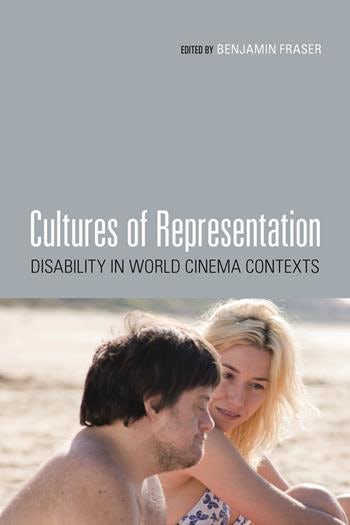Cultures of Representation is the first book to explore the cinematic portrayal of disability in films from across the globe. Contributors explore classic and recent works from Belgium, France, Germany, India, Italy, Iran, Japan, Korea, Mexico, Netherlands, Russia, Senegal, and Spain, along with a pair of globally resonant Anglophone films. Anchored by David T. Mitchell and Sharon L. Snyder's coauthored essay on global disability-film festivals, the volume's content spans from 1950 to today, addressing socially disabling forces rendered visible in the representation of physical, developmental, cognitive, and psychiatric disabilities. Essays emphasize well-known global figures, directors, and industries – from Temple Grandin to Pedro Almodóvar, from Akira Kurosawa to Bollywood – while also shining a light on films from less frequently studied cultural locations such as those portrayed in the Iranian and Korean New Waves. Whether covering postwar Italy, postcolonial Senegal, or twenty-first century Russia, the essays in this volume will appeal to scholars, undergraduates, and general readers alike.
- Table of Contents
- Acknowledgments
- Notes on Contributors
- Introduction: Disability Studies, World Cinema and the Cognitive Code of Reality, by Benjamin Fraser
- Global In(ter)dependent Disability Cinema: Targeting Ephemeral Domains of Belief and Cultivating Aficionados of the Body, by David T. Mitchell and Sharon L. Snyder
- ‘Beyond Forgiveness’? Lee Chang-dong’s Oasis (2002) and the Mobilisation of Disability Discourses in the Korean New Wave, by Paul Petrovic
- Refusing Chromosomal Pairing: Inclusion, Disabled Masculinity, Sexuality and Intimacy in Yo mama, también (2009), by Michael Gill
- Dunce! Duffer! Dimwit!: Dyslexia in Bollywood’s Taare Zameen Par (2007), by Sanjukta Ghosh
- Landscapes of Children: Picturing Disability in Buñuel’s Los olvidados (1950), by Susan Antebi
- Fearful Reflections: Representations of Disability in Postwar Dutch Cinema (1973–2011), by Mitzi Waltz
- ‘People Endure’: The Function of Autism in Anton’s Right Here (2012), by José Alaniz
- Displaying Autism: The Thinking and Images of Temple Grandin (2010), by Katherine Lashley
- More than the ‘Other’? On Four Tendencies Regarding the Representation of Disability in Contemporary German Film (2005–2010), by Petra Anders
- The Other Body: Psychiatric Disability and Pedro Almodóvar (1988–2011), by Candace Skibba
- On the Road to Normalcy: European Road Movies and Disability (2002–2011), by Anna Grebe
- Re-envisioning Italy’s ‘New Man’ in Bella non piangere! (1955), by Jennifer Griffiths
- ‘Get Your Legs Back’: Avatar (2009) and the Re-booting of American Individualism, by Susan Flynn
- Through the Disability Lens: Revisiting Ousmane Sembène’s Xala (1975) and Camp de Thiaroye (1988), by Ken Junior Lipenga
- Homes Wretched and Wrecked: Disability as Social Dis-ease in Kurosawa’s Dodes’ka-den (1970), by James A. Wren
- Leprosy and the Dialectical Body in Forugh Farrokhzad’s The House is Black (1964), by Rosa Holman
- Index

